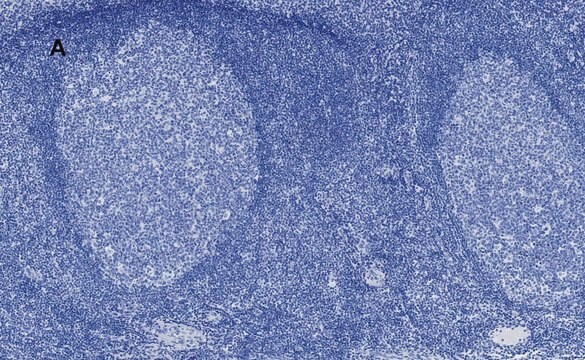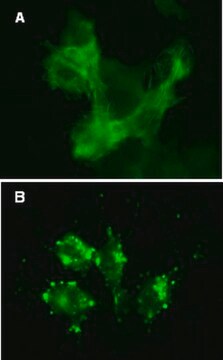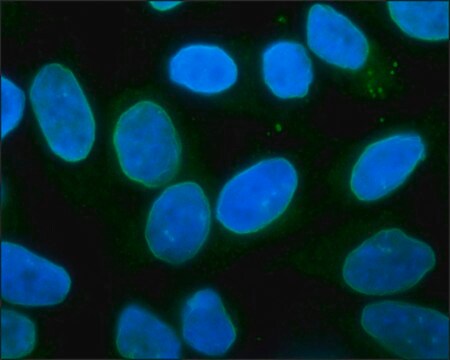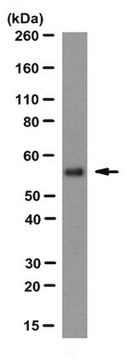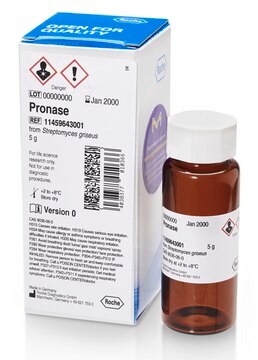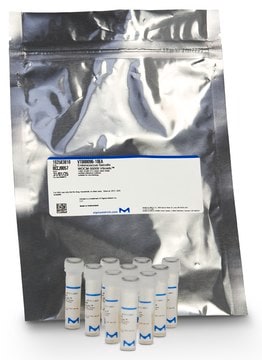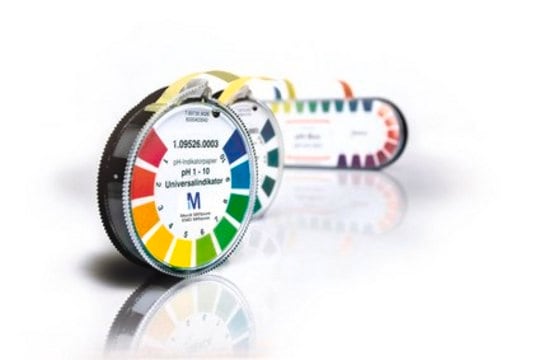06-1002
Anti-LAP2 Antibody
from rabbit, purified by affinity chromatography
Synonym(e):
LEM domain containing 4, TP alpha, TP beta/gamma, TPRP isoform alpha, TPRP isoforms beta/gamma, Thymopoietin isoform alpha, Thymopoietin, isoforms beta/gamma, Thymopoietin-related peptide isoform alpha, Thymopoietin-related peptide isoforms beta/gamma, l
About This Item
Empfohlene Produkte
Biologische Quelle
rabbit
Qualitätsniveau
Antikörperform
affinity isolated antibody
Antikörper-Produkttyp
primary antibodies
Klon
polyclonal
Aufgereinigt durch
affinity chromatography
Speziesreaktivität
rat, human, mouse, canine
Methode(n)
immunocytochemistry: suitable
immunofluorescence: suitable
western blot: suitable
NCBI-Hinterlegungsnummer
UniProt-Hinterlegungsnummer
Versandbedingung
wet ice
Posttranslationale Modifikation Target
unmodified
Angaben zum Gen
human ... TMPO(7112)
Allgemeine Beschreibung
The best characterized isoforms of lamin binding protein LAP2 are LAP2α and LAP2β. LAP2β is a type II membrane protein in the inner nuclear membrane that binds lamin B and is important to cell viability and controlling nuclear lamina growth. LAP2α has been characterized as a nucleoplasmic protein that interacts with A-type lamins to control gene expression, transcription, and chromatin organization.
Spezifität
Immunogen
Anwendung
Epigenetik & nukleäre Funktionen
Cytoskelettale Signalübertragung
Representative lot data. This antibody was used to detect the nuclear lamina by immunofluorescence.
Immunocytochemistry:
Representative lot data.
A previous lot was used in confocal fluorescent analysis of A431, HeLa and NIH/3T3 cells using anti-LAP2 rabbit polyclonal antibody (Red).
Actin filaments have been labeled with AlexaFluor 488 -Phalloidin (Green). Nuclear is stained with DAPI (Blue). Positive nuclear staining.
Qualität
Western Blot Analysis:
A 1:1000-1:3000 dilution of this antibody was used to detect LAP2 in HeLa cell lysate.
Zielbeschreibung
Physikalische Form
Lagerung und Haltbarkeit
Hinweis zur Analyse
HeLa cell lysate
Haftungsausschluss
Sie haben nicht das passende Produkt gefunden?
Probieren Sie unser Produkt-Auswahlhilfe. aus.
Lagerklassenschlüssel
12 - Non Combustible Liquids
WGK
WGK 1
Flammpunkt (°F)
Not applicable
Flammpunkt (°C)
Not applicable
Analysenzertifikate (COA)
Suchen Sie nach Analysenzertifikate (COA), indem Sie die Lot-/Chargennummer des Produkts eingeben. Lot- und Chargennummern sind auf dem Produktetikett hinter den Wörtern ‘Lot’ oder ‘Batch’ (Lot oder Charge) zu finden.
Besitzen Sie dieses Produkt bereits?
In der Dokumentenbibliothek finden Sie die Dokumentation zu den Produkten, die Sie kürzlich erworben haben.
Unser Team von Wissenschaftlern verfügt über Erfahrung in allen Forschungsbereichen einschließlich Life Science, Materialwissenschaften, chemischer Synthese, Chromatographie, Analytik und vielen mehr..
Setzen Sie sich mit dem technischen Dienst in Verbindung.
